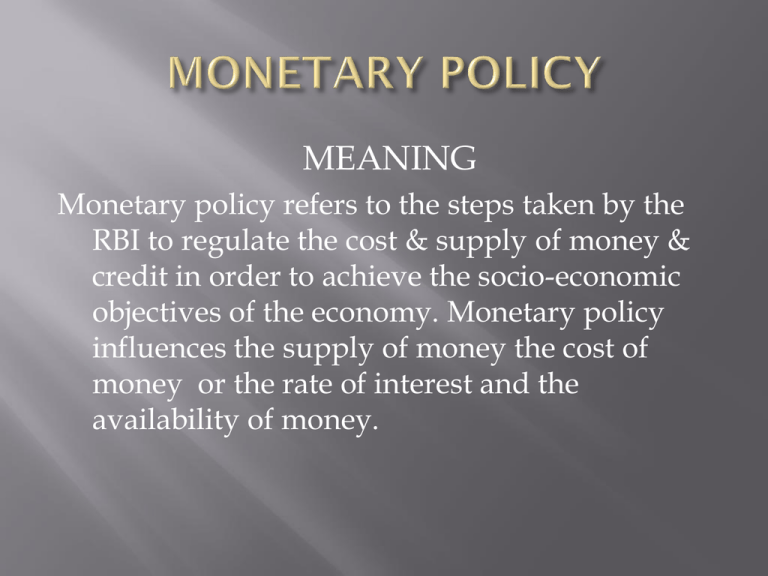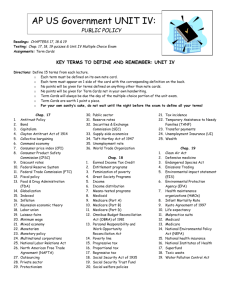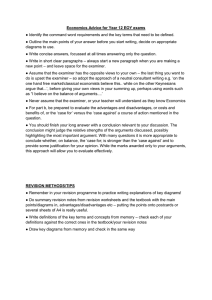Monetary Policy: Meaning, Objectives & Measures
advertisement

MEANING Monetary policy refers to the steps taken by the RBI to regulate the cost & supply of money & credit in order to achieve the socio-economic objectives of the economy. Monetary policy influences the supply of money the cost of money or the rate of interest and the availability of money. According to D.C. ROWAN , `` Discretionary act undertaken by the authorities designed to influence (a) the supply of money (b) cost of money or rate of interest and (c) the availability of money.” To accelerate the process of economic growth. Controlled expansion. (A) Measures for expansion of currency and credit. (B)Measures for controlling of credit. Revision of open market operation. (2) Liberalisation of the bill market scheme. (3) Financing facilities to the priority sectors. (4) Refinancing and rediscounting facilities. (5) Establishment of various financial institutions. (i) ICICI (ii) IDBI (iii) IFCI (iv) IRCI (v) NABARD (vi) ARDC (vii) SFC`S (6) Deficit financing. (7) Anti – inflationary fiscal policy. (8) Allocation of credit. (1) (i) a. b. c. d. e. (i) a. b. c. d. e. f. General or Quantitative measures. Bank rate. Open market operations. Cash reserve requirements. Statutory liquidity ratio. Refinance policy. Selective or Qualitative measures. Regulation of marginal requirement on loans. Regulation of consumer credit. Rationing of credit. Credit Authorisation Scheme (CAS). Directives. Moral persuasion. Minor and restricted role in economic development. Lack of coordination between monetary and fiscal policy. Imbalance in credit allocation. Unsatisfactory role of capital market. Excessive budgetary deficit and government borrowings. Excessive increase in bank credit to the commercial sector. Limited role in curbing the inflationary pressures. Increased liquidity of commercial banks. Existence of BLACK MONEY. Under developed money market. Price stability. Non – Inflationary financing of plans. Monetary targeting. Co-ordination of monetary and fiscal policies. Interest rate policy. Credit planning. Restructured money market. Priority sector lending. Role of RESERVE BANK for the conduct of monetary policy. In the wake of the global economic crisis, the reserve bank pursued an accomodative monetary policy beginning mid – september 2008. This policy instiled financial crises on the economy and ensured that the economy started recovering aheadof most of the other economies. The monetary policy response in INDIA since October 2009 has been caliberated to India`s specific macroeconomic conditions. Consolidating Recovery. Accentuated Inflationary Pressures. Higher Issuance of Securities.











